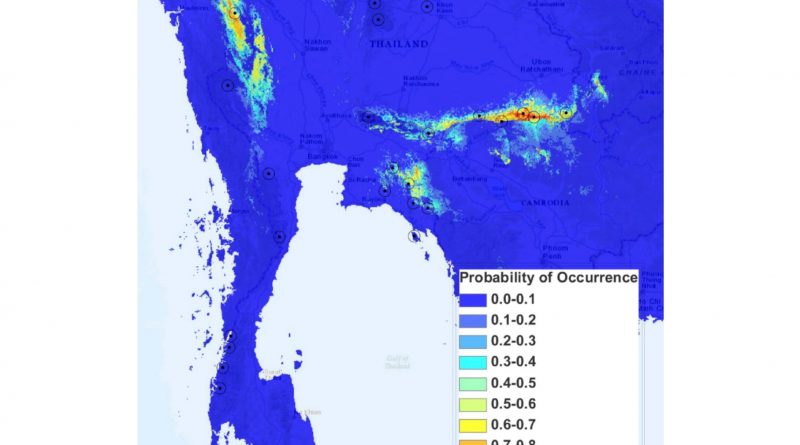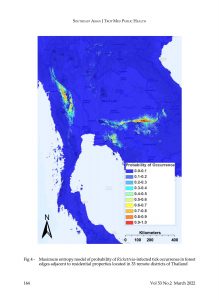Highlight Activities 2022: Ecological niche modeling of Rickettsia-infected and -uninfected ticks in forest edges of Thailand
Summary: Rickettsia spp are the causative agents of rickettsia infection in humans and animals. In Thailand, many Rickettsia spp with unknown pathogenicity have been detected in ticks, but the demographic and geographic distributions of their Rickettsia infection status remain largely unknown. Here, an ecological niche model based on maximum entropy method was constructed using a maximum entropy program to determine environmental factors and probability of occurrence and distribution of Rickettsia-infected ticks based on 38 environmental raster layers. The ecological niche model predicted that optimal Rickettsia-infected tick occurrence was during a season with low precipitation and high temperature and an elevation of <1,400 m. In addition, highest frequency of infected ticks was predicted to be found in along the Thai-Cambodia border at the lower region of northeastern Thailand. The predictions were statistically concordant with data collected from forest edges adjacent to residential areas in 33 remote districts of Thailand between 2008-2011. The study should provide baseline information which should assist in future development of surveillance and prevention programs for tick-borne rickettsioses in humans, especially in remote areas where diagnosis is not available and late responses frequently occur.
Figure Maximum entropy model of probability of Rickettsia-infected tick occurrence in forest edges adjacent to residential properties located in 33 remote districts of Thailand
Reference
Ruang-Areerate, T., Hirunkanokpun, S., Baimai, V., Trinachartvanit, W., and Ahantarig, A. (2022). Ecological niche modeling of Rickettsia-infected and-uninfected ticks in forest edges of Thailand. Southeast Asian J Trop Med Public Health, 53(2), 151–172.


